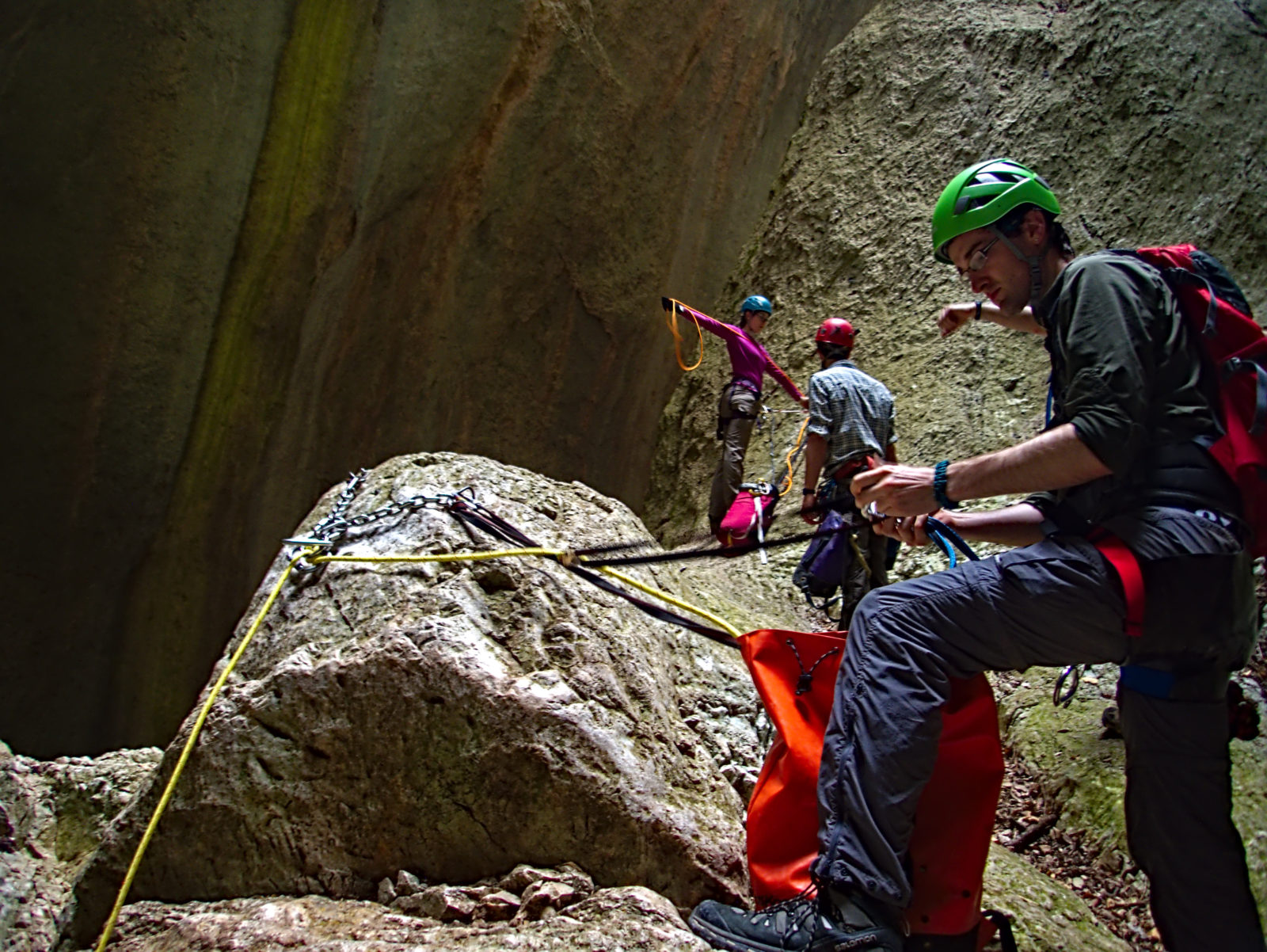Wednesday 24th: Bacu sa Figu
I enjoyed Badde Pentumas immensely, but it did little to satiated my lust for sweaty neoprene, wet abseils and jumps into water. The winter had been dry in Sardinia, and the flow was low in all the canyons. In the Alps, the canyons are fed by meltwater and glaciers all year round, but Sardinia has lower mountains and so needs rain to sustain the flow. Looking through the guide book, we found that Bacu sa Figu was one of the most reliable canyons, and so we settled on that.
We were pushing it going another day with a break, and we had arrived back late from Badde Pentumas. Still, we had just enough energy to get up and get the car packed. There was a possibility of a shuttle, but a recent report from Descente Canyon said
It would be a shame to commute and not enjoy the beautiful approach path
User Pano on Descente Canyon
and we did not wish to feel shame. On the drive through Urzulei, we saw some banners announcing the caving conference happening this week in Sardinia, including references to the enticingly named Speleo bar.
The path up was quite beautiful. I think the others enjoyed it more than me because I had 70 m of rope and a bolting kit in addition to all my kit, and so found it quite strenuous. Clearly the area had once been developed for hiking and tourism, with explanatory signs and impressive stone staircases. But these had all decayed, with the paths beginning to grow over.
After climbing one peak and descending to a saddle, we found a forestry station staffed by two puppies and another green glad Sardinian forester. Approximately 38% of the Sardinian population seems to be employed as foresters – the rest are scuba instructors or sell ice cream to tourists. The path continued on and up until we met the road, the road we would’ve driven along for our shuttle. But something was not quite right.
The road was overgrown with bushes, with some plants pushing up through cracks in the middle. In places the sides of the road had collapsed into the gorge below, and there was a thick coating of sheep poo all over it. Walking along here was an eerie experience, like something out of a post-apocalyptic movie. Clearly there was no way we could’ve driven here even if we’d wanted to, and so we felt happier about our choice to do the 2.5 hr walk up in the hot sun!
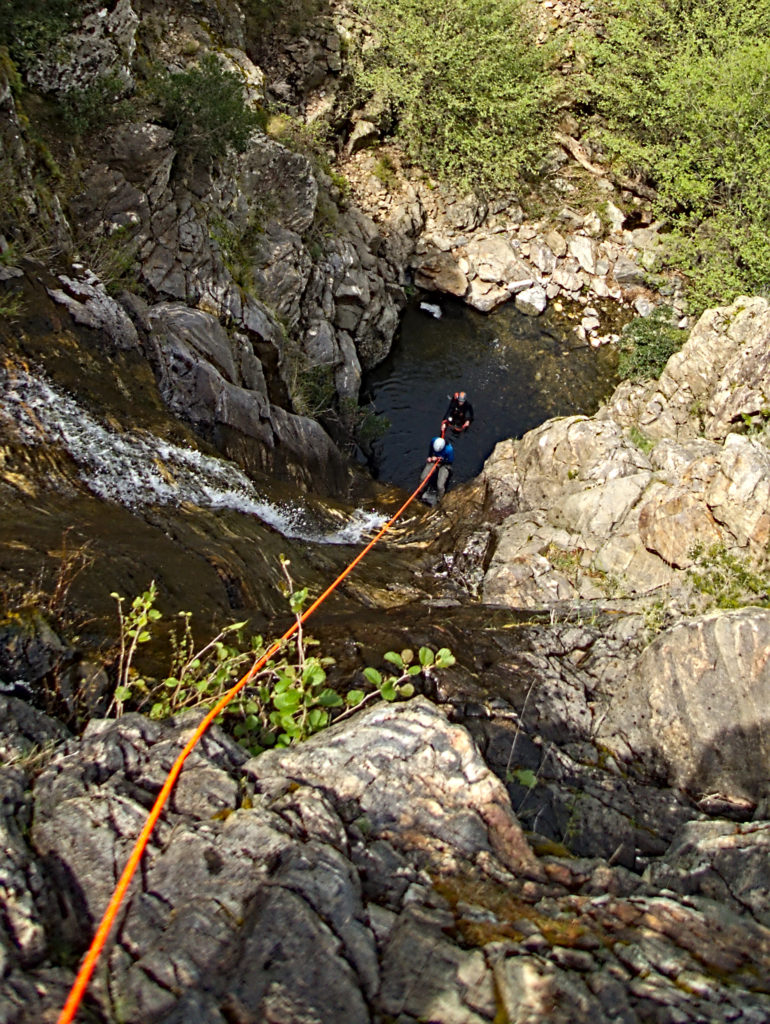
We changed and ate lunch. I think moral was low – certainly I felt tired and maybe hungry, and this made me a bit grumpy. The water flow was lower than I’d hoped, and I picked my way through brackish pools surrounded by thorns, trying to find the first abseil. It was not very inspiring – a traverse to some poorly placed bolts which maximised the rub and a route down an algae slicked rock face.
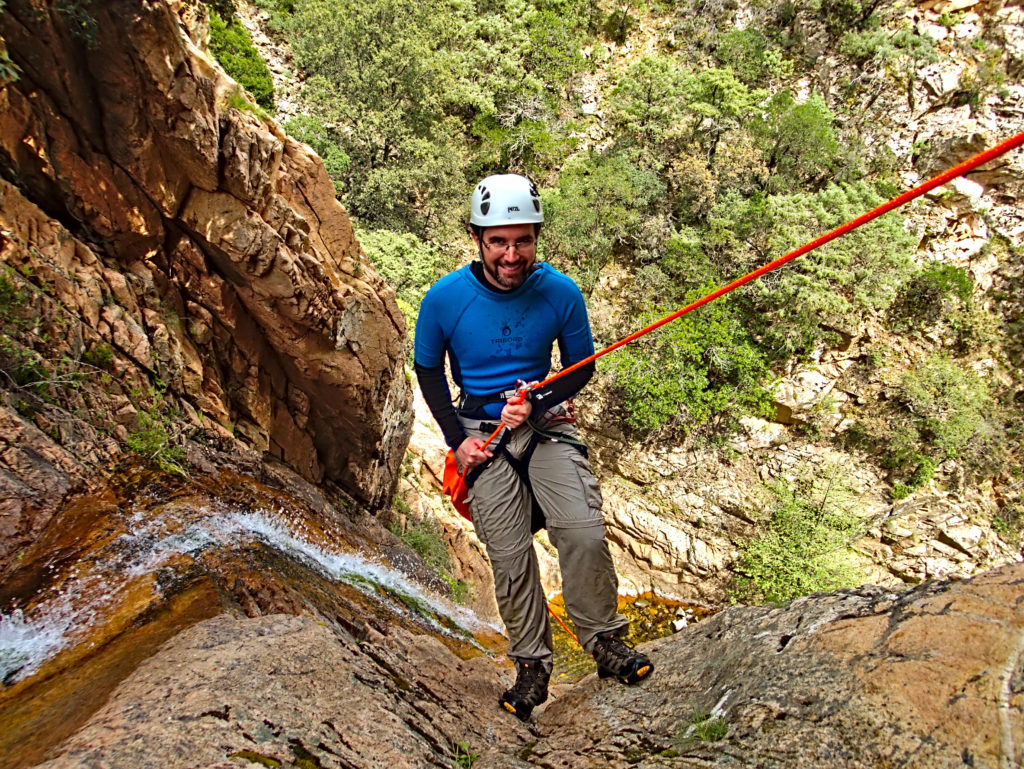
Today I was with Susan, Rhys with Mr Jack and Alex with Kevin, again with three ropes. As we got into the rhythm of the canyon, my mood improved, possibly helped by my lunch digesting and cooling off a bit in some deeper pools. Certainly as we descended the charm of the canyon became more obvious – pinkish orange granite, which had been scoured clean by a massive flood in 2005 still kept its charm, and when the sun hit it in an encased section the entire seen was bathed with warm light.
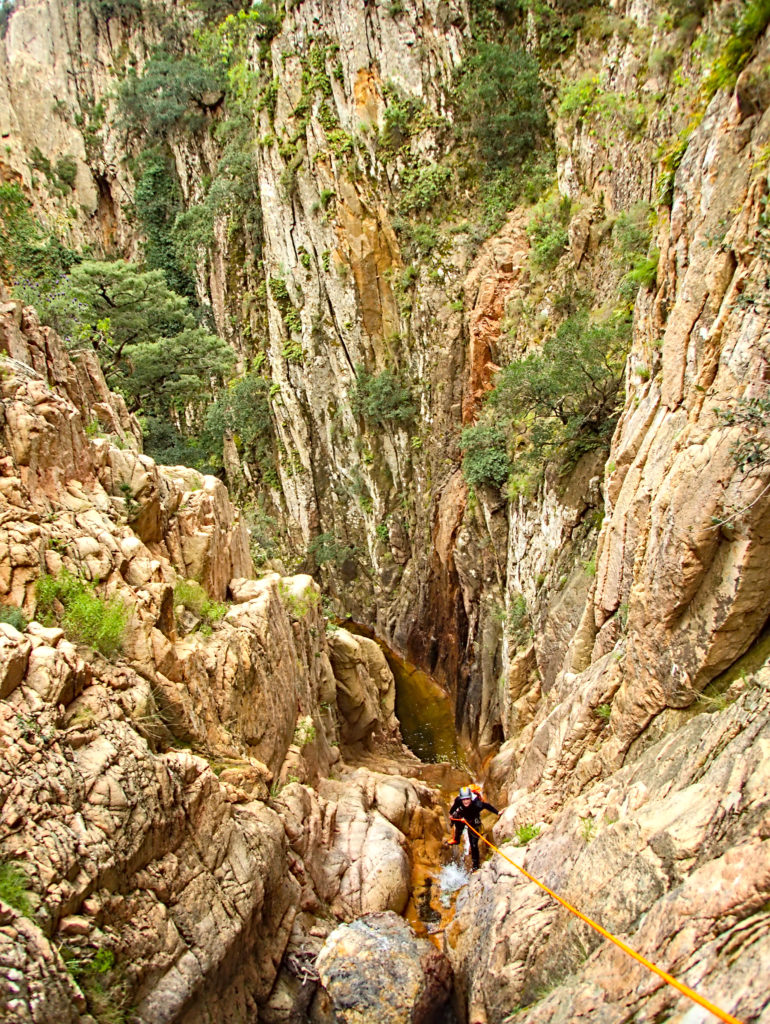
After a series of pools which we mostly walked around, we came to a narrower section, where the pitch was rigged from on top of some wedged boulders. It was a sloping pitch in a rift filled with water, and we couldn’t throw the rope far enough to make it to the bottom. Not to worry – we’d been studying the Canyoning techniques manual from some NZ canyoners, and decided to set up a releasable abseil (see caption for details) which allowed us to lower Rhys until he got close to the water, at which point he undid his hard lock and made a big splash. this neatly set the rope length in the process and stopped it getting tangled on the way down.
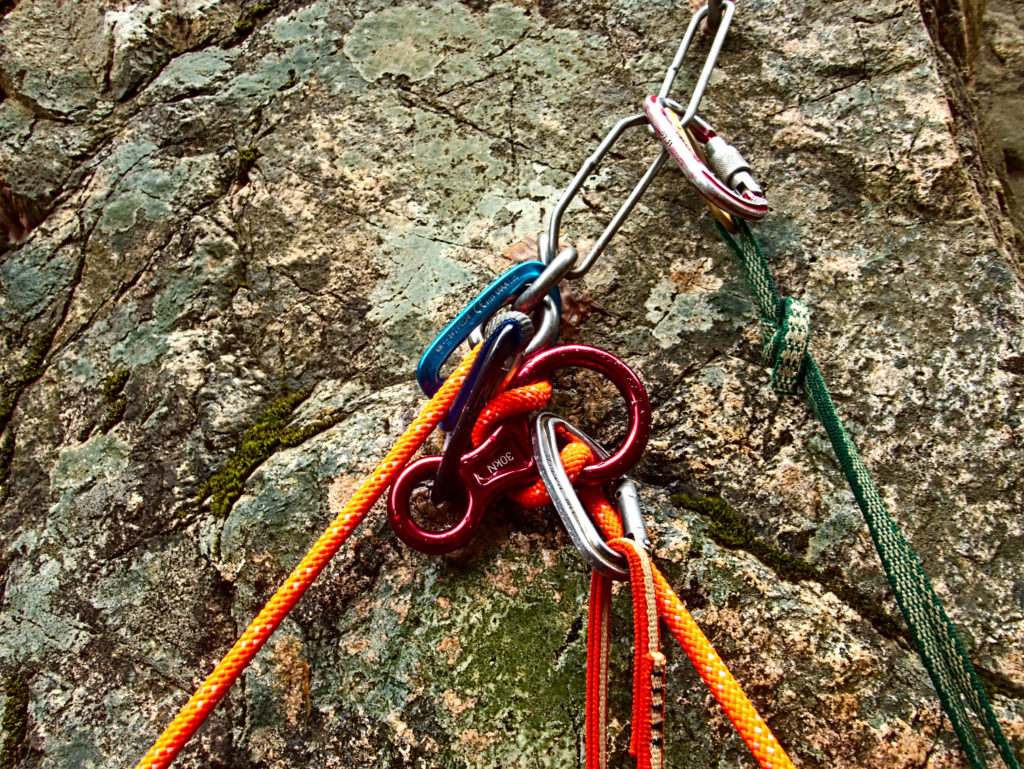
After this was a fairly long section of walking and splashing through pools, with some short abseils. We found one pool suitable for jumping, and both Susan and Rhys had a go.
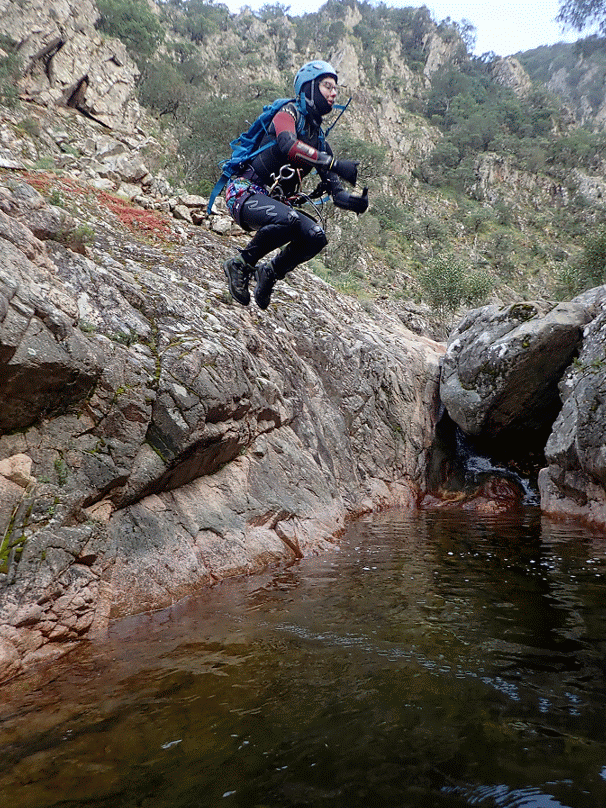
Susan develops a real liking for jumps and toboggans. In fact, it becomes difficult to stop her doing some of the more dangerous ones! Here she is just entering the water after a 2-3 m jump.
At a toboggan I decided to let my rope bag go down first. After I surfaced, I looked around. It was no where to be seen. I asked the others if anyone had scooped it out of the water for me, and they all denied any knowledge. With a sense of mounting horror, I put on my goggles and looked under water. There was the rope bag. It seemed impossibly far away. I dived down, kicking against the buoyancy of my neoprene, and almost managed to grab the handle before returning suddenly to the surface. Spluttering on the surface, I realised there was no choice but to have another go. I kicked as hard as possible, my legs now fully underwater as I swam straight down. I just managed to grab a strap before my air ran out, and I took an impossibly long time to surface. My sinuses were full of water and I was gasping for breath for minutes, but I’d at least rescued the bag, with 70 m of rope and a bolting kit. Note to self – bolting kits do not float. I added some empty plastic bottles the next day to correct for this problem.
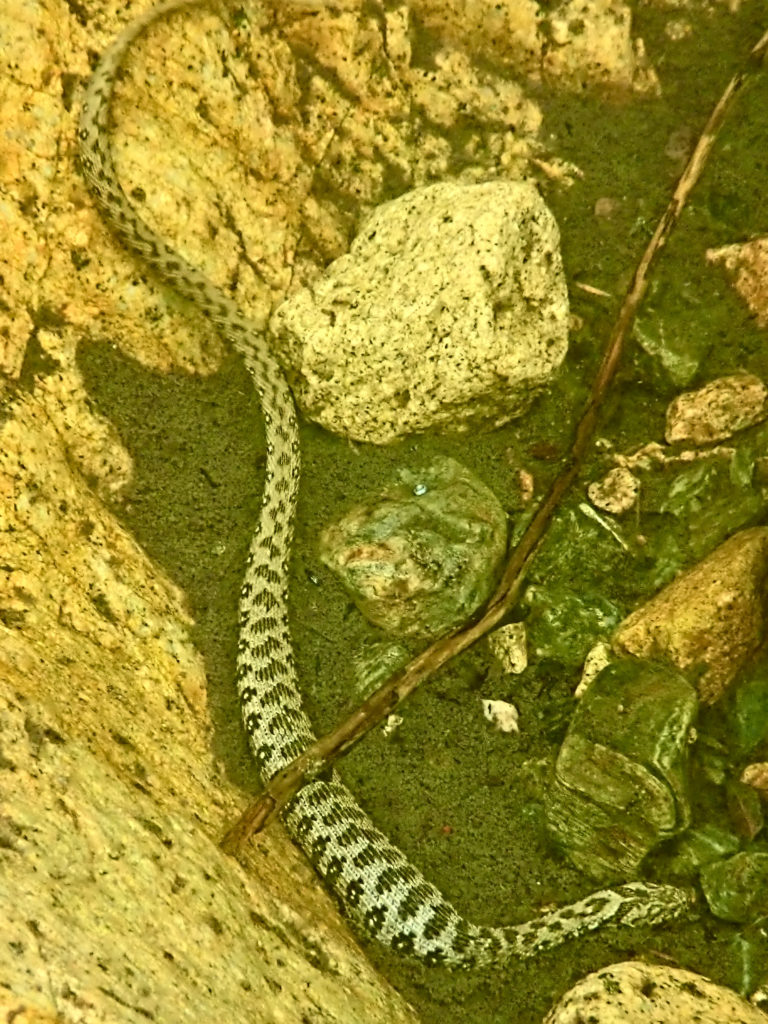
After this excitement, we continued on to the triple junction where two other canyons joined ours. The water flow now increased significantly and this section felt like a proper Alpine canyon. I really, really enjoyed the smooth movement through deep water, interspersed with small jumps, swims and toboggans. Susan and I moved swiftly, and this section was all too short. One lovely pitch had a good deep pool for a canyoning style drop off, and then we were at the final monster 37 m pitch.
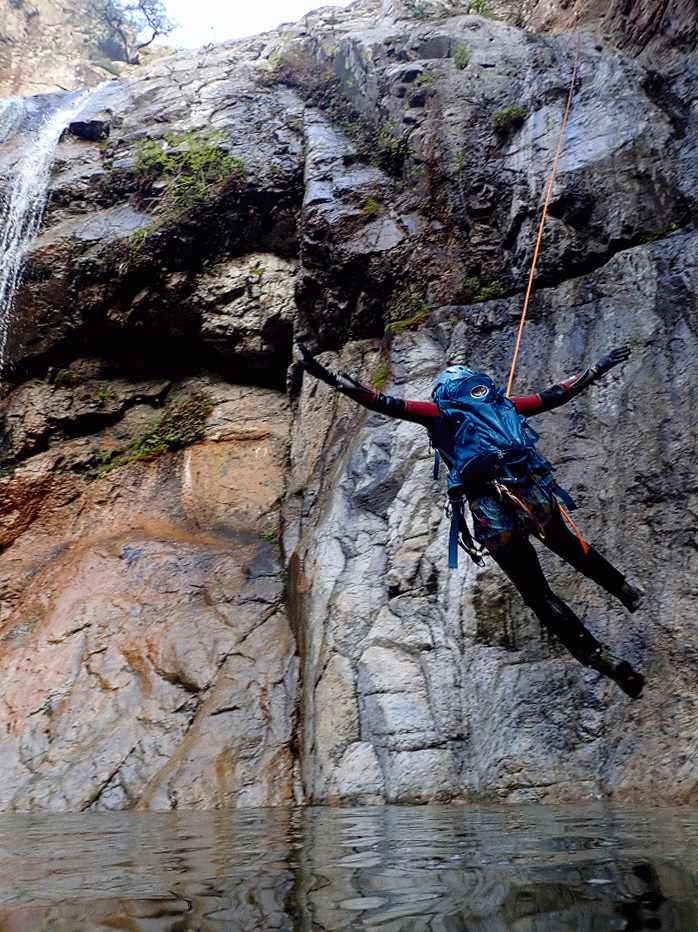
The penultimate pitch has a big enough pool for a canyoning style drop off into watter, which Susan embraces. The sun is beginning to set, as you can tell by the muted colour palette here!
Here the original bolts were badly damaged, with one torn from the wall and the linking metal chain deformed. Fortunately there were new resin anchors higher up, though they were a bit tough to reach. After some slightly dangerous acrobatics above a long drop, I’d rigged the pitch and Rhys went down. Splash.
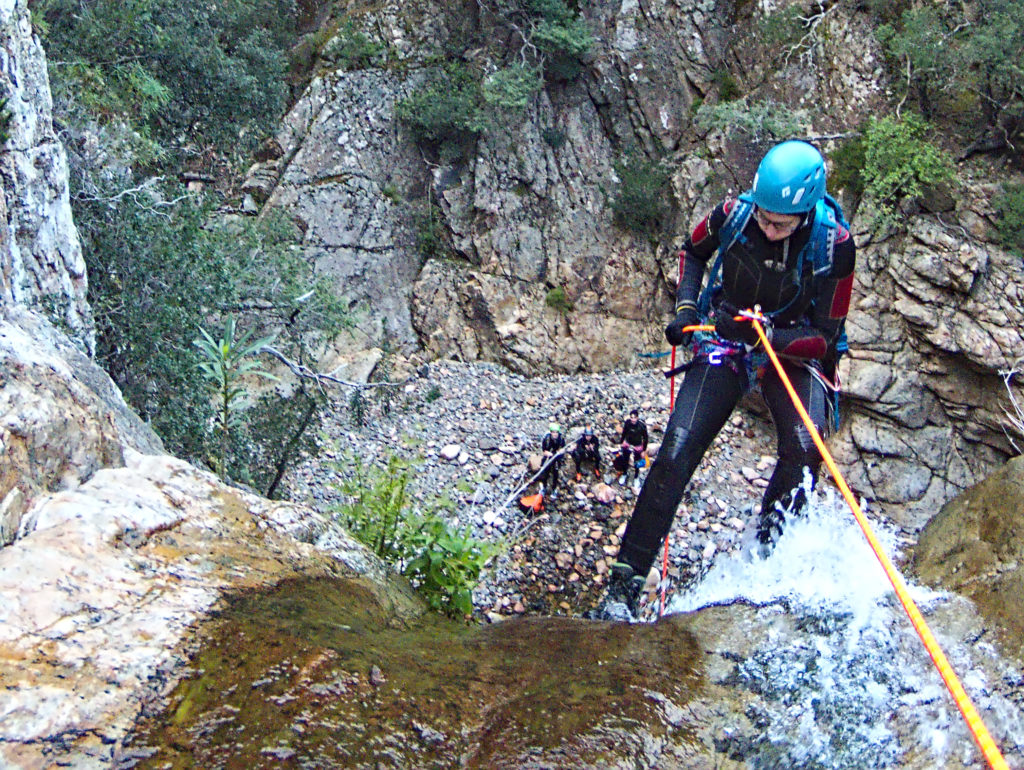
It was a properly wet pitch, and Mr Jack in particular excelled at ‘teleporting’ through the wettest section over a smoothly polished chute. Rhys has photos of him being near the top and then suddenly a the bottom, though he insists he did not lose control. I got up some speed going down on the derig and then that was it – all the pitches were over, and now we simply had to walk out.
It was a long way out of the canyon and we were all tired. It took a while to spot to correct path out, with some of us trying to follow the guidebook and Kevin more pragmatically just searching for a decent track so we didn’t have to boulder hop in the canyon. Eventually after a mad wild goat path chase on the right bank we found a decent 4×4 track on the left bank and quickly returned to our cars. The sun was setting, and we were tired – clearly the next day we would need to rest!
